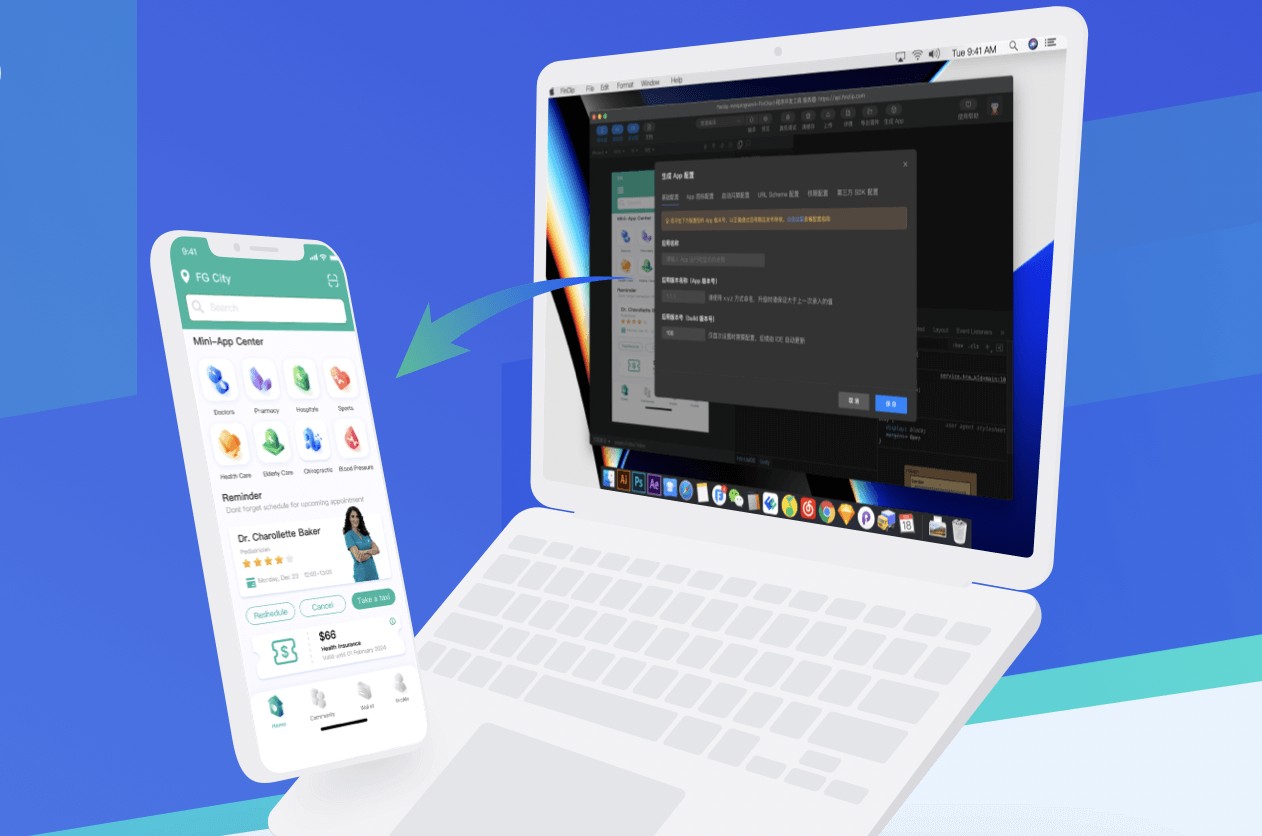微前端架构如何改变企业的开发模式与效率提升
776
2022-10-17

Netty分布式pipeline管道创建方法跟踪解析

目录概述pipeline的创建
上一章节回顾:Netty分布式源码分析监听读事件
概述
pipeline, 顾名思义, 就是管道的意思, 在netty中, 事件在pipeline中传输, 用户可以中断事件, 添加自己的事件处理逻辑, 可以直接将事件中断不再往下传输, 同样可以改变管道的流向, 传递其他事件.这里有点类似于Spring的AOP, 但是比AOP实现起来简单的多
事件通常分为两种, 一是inBound事件, 另一种是outBound事件, inBound事件, 顾名思义, 就是从另一端流向自己的事件, 比如读事件, 连接完成事件等等, outBound, 是从自己流向另一端的事件, 比如连接事件, 写事件, 刷新缓冲区事件等等
在netty中, 事件是通过handler对象进行处理的, 里面封装着事件的处理逻辑.而每个handler, 是由HandlerContext进行包装的, 里面封装了对事件传输的操作
通过之前的学习, 我们知道每一个channel绑定一个pipeline, 那么pipeline和handler又是什么关系呢?
其实pipeline我们可以理解成是一个双向链表的数据结构, 只是其中存放的并不是数据而是HandlerContext, 而Hanhttp://dlerContext又包装了handler, 事件传输过程中, 从头结点(或者尾节点)开始, 找到下一个HandlerContext, 执行其Handler的业务逻辑, 然后再继续往下走, 直到执行到尾节点(或者头结点, 反向)为止, 通过一幅图了解其大概逻辑:
这里head代表pipeline的头结点, tail代表pipeline的尾节点, 这两个节点是会随着pipeline的初始化而创建, 并且不会被删除
HandlerContext的简单继承关系比较简单, 默认的是DefaultChannelHandlerContext, 继承于AbstractChannelHandlerContext
而Handler分为InboundHandler和outBoundHandler, Inbound专门处理inbound事件, outBound专门用于处理outBound事件
继承关系如下图:
从图中不难看出, 如果属于ChannelInboundHandler的子类, 则属于Inbound类型的handler
如果是ChannelOutboundHandler的子类, 则属于Outbound类型的handler
了解了其大概逻辑, 我们继续跟到源码中, 看其实如何体现的:
pipeline的创建
回顾之前NioServerSocketChannel的创建过程
我们看AbstractChannel的构造方法:
protected AbstractChannel(Channel parent) {
this.parent = parent;
id = newId();
unsafe = newUnsafe();
pipeline = newChannelPipeline();
}
我们跟到newChannelPipeline()中:
protected DefaultChannelPipeline newChannelPipeline() {
//传入当前channel
return new DefaultChannelPipeline(this);
}
我们看到这里创建了一个DefaultChannelPipeline, 并将自身channel传入
继续跟DefaultChannelPipeline的构造方法:
protected DefaultChannelPipeline(Channel channel) {
this.channel = ObjectUtil.checkNotNull(channel, "channel");
succeededFuture = new SucceededChannelFuture(channel, null);
voidPromise = new VoidChannelPromise(channel, true);
tail = new TailContext(this);
head = new HeadContext(this);
head.next = tail;
tail.prev = head;
}
首先保存了当前channel
然后保存了两个属性succeededFuture, voidPromise, 这两个属性是Future相关的内容, 之后的章节会讲到
首先, 这里初始化了两个节点, head节点和tail节点, 在pipeline中代表头结点和尾节点
我们首先跟到这tail节点类中,也就是TailContext类:
final class TailContext extends AbstractChannelHandlerContext implements ChannelInboundHandler {
TailContext(DefaultChannelPipeline pipeline) {
//inbound处理器
super(pipeline, null, TAIL_NAME, true, false);
//将当前节点设置为已添加, head和tail.....
setAddComplete();
}
//自身也是handler
@Override
public ChannelHandler handler() {
return this;
}
//方法省略
这个是DefualtPipline的内部类, 首先看其继承了Abshttp://tractChannelHandlerContext类, 说明自身是个HandlerContext, 同时也实现ChannelInboundHander接口, 并且其中的handler()方法返回了自身, 说明自身也是handler, 而实现ChannelInboundHander, 说明自身只处理Inbound事件
构造方法中, 调用了父类的构造器, 看其中参数:
pipeline是自身所属的pipeline
executor为null
TAIL_NAME是当前handler, 也就是自身的命名
true代表自身是inboundHandler
fasle代表自身不是outboundHandler
继续跟到父类构造方法中:
AbstractChannelHandlerContext(DefaultChannelPipeline pipeline, EventExecutor executor, String name,
boolean inbound, boolean outbound) {
//名字
this.name = ObjectUtil.checkNotNull(name, "name");
//pipeline
this.pipeline = pipeline;
//线程处理器
this.executor = executor;
//事件标识
this.inbound = inbound;
this.outbound = outbound;
ordered = executor == null || executor instanceof OrderedEventExecutor;
}
这里初始化了自身父类的几个属性
pipeline为自身绑定的pipeline
exeutor是线程执行器, 这里为空
inbound和outbound是事件标志, 这里分别是true和false, 也就是自身属于inboundHnadler而不属于outboundHandler
回到DefaultChannelPipeline的构造方法:
protected DefaultChannelPipeline(Channel channel) {
this.channel = ObjectUtil.checkNotNull(channel, "channel");
succeededFuture = new SucceededChannelFuture(channel, null);
voidPromise = new VoidChannelPromise(channel, true);
tail = new TailContext(this);
head = new HeadContext(this);
head.next = tail;
tail.prev = head;
}
再看HeadContext类:
final class HeadContext extends AbstractChannelHandlerContext
implements ChannelOutboundHandler, ChannelInboundHandler {
private final Unsafe unsafe;
HeadContext(DefaultChannelPipeline pipeline) {
super(pipeline, null, HEAD_NAME, false, true);
unsafe = pipeline.channel().unsafe();
setAddComplete();
}
@Override
public ChannelHandler handler() {
return this;
}
}
看过了tail节点, head节点就不难理解, 同样继承了AbstractChannelHandlerContext, 说明自身是一个HandlerContext, 与tail不同的是, 这里实现了ChannelOutboundHandler接口和ChannelOutboundHandler接口, 说明其既能处理inbound事件也能处理outbound的事件, handler方法返归自身, 说明自身是一个handler
在构造方法中初始化了一个Unsafe类型的成员变量, 是通过自身绑定的channel拿到的, 说明这个类中可以进行对channel的读写操作
这里同样调用了父类的构造方法, 不同的是, 这里inbound参数传入了false, 而outbound参数传入了true, 这里说明这里标志的事件是outbound事件
同学们可能疑惑, 为什么同时执行ChannelOutboundHandler接口和ChannelOutboundHandler但是标志的事件不同?
其实这两个地方应用的场景是不同的, 继承ChannelOutboundHandler和ChannelOutboundHandler, 说明其既能处理inbound事件也能处理outBound的事件, 但是只有outbound属性为true说明自身是一个outboundhandler, 是一个可以处理inbound事件的outboundhandler(估计被绕晕了), 这两种handler主要是保证在事件传输中保证事件的单方向流动, 在后面事件传输我们能领会到
再跟进父类的构造方法, 又是我们熟悉的部分:
AbstractChannelHandlerContext(DefaultChannelPipeline pipeline, EventExecutor executor, String name,
boolean inbound, boolean outbound) {
//名字
this.name = ObjectUtil.checkNotNull(name, "name");
//pipeline
this.pipeline = pipeline;
//线程处理器
this.executor = executor;
//事件标识
this.inbound = inbound;
this.outbound = outbound;
ordered = executor == null || executor instanceof OrderedEventExecutor;
}
初始化了pipeline, executor, 和事件标识的属性
回到DefaultChannelPipeline的构造方法:
protected DefaultChannelPipeline(Channel channel) {
this.channel = ObjectUtil.checkNotNull(channel, "channel");
succeededFuture = new SucceededChannelFuture(channel, null);
voidPromise = new VoidChannelPromise(channel, true);
tail = new TailContext(this);
head = new HeadContext(this);
head.next = tail;
tail.prev = head;
}
我们介绍完了head, 和tail这两个context, 继续往下看:
head.next = tail;
tail.prev = head;
tail节点和head节点中的next和prev属性, 其实是其父类AbstractChannelHandlerContext, 每一个handlerContext都拥有这两个属性, 代表自身的下一个节点和上一个节点, 因为我们概述中介绍过pipeline其实是一个双向链表, 所以其中每一个节点必须有指向其他节点的指针, 熟悉双向PGcyLYo链接数据结构的同学应该不会陌生
这里head节点的next属性是tail节点, tail节点的prev属性是head, 说明当前双向链表只有两个节点, head和tail, 其中head下一个节点指向tail, tail的上一个节点指向head, 如图所示:
以上就是pipeline的初始化过程,更多关于Netty分布式pipeline管道创建的资料请关注我们其它相关文章!
版权声明:本文内容由网络用户投稿,版权归原作者所有,本站不拥有其著作权,亦不承担相应法律责任。如果您发现本站中有涉嫌抄袭或描述失实的内容,请联系我们jiasou666@gmail.com 处理,核实后本网站将在24小时内删除侵权内容。
发表评论
暂时没有评论,来抢沙发吧~